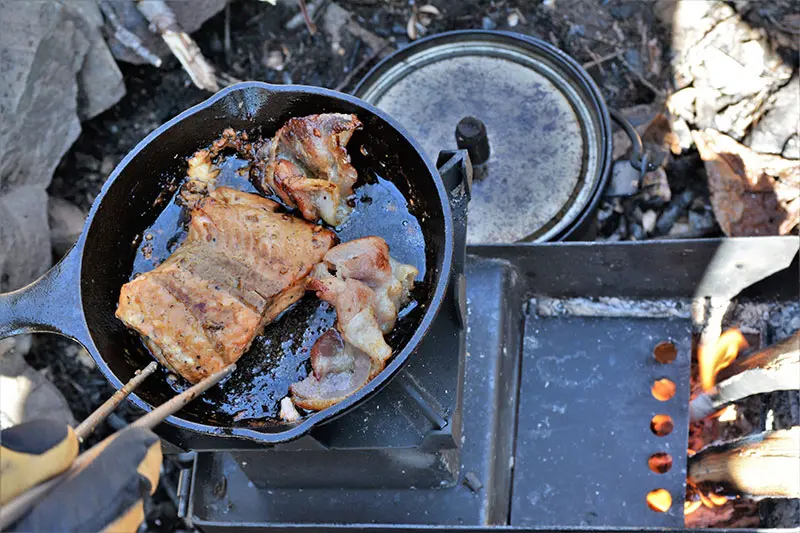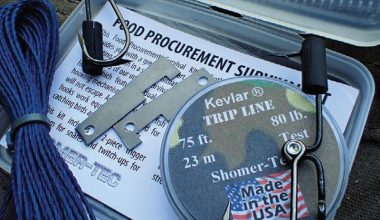There are hundreds of books on the subjects of trees, plants and wild edibles. I find plant identification to be one of the hardest things to learn and apply. Unless the reader has the opportunity to go outdoors and consistently see, eat or use plants and trees to construct something, it may be nearly impossible to remember what various uses they all have.
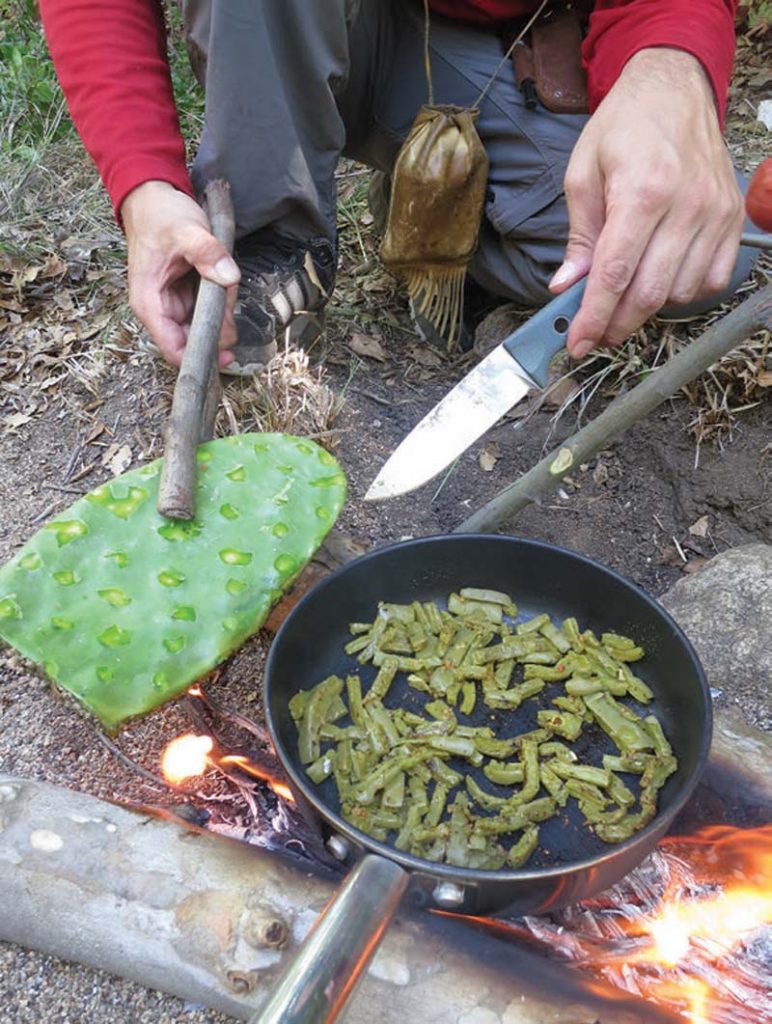
During a survival class in Alabama a few years ago, a guest instructor took students on a one-hour nature walk to show them wild edibles and useful plants. The instructor was the best I have ever seen at identifying plants and trees. But after about ten plants, it became hard for the students to retain the info, let alone apply it. Twenty plants later, everyone’s motherboards had fried—serious information overload.
For the purposes of this article, I will cover three common useful plants and trees found in the southwestern United States and a few ways in which they can aid in a survival situation.
Table of Contents
PACIFIC WILLOW AND SEEP WILLOW
I once asked a man who raises bees and makes his own honey, “What can you do with honey?” And he rattled off about ten different uses for honey. I consider willow to be similar in that it has various uses.
Willows grow in thickets along southwestern rivers and streams. Many are only shrubs, while in other places they are trees 20 to 60 feet tall. Seep willows thrive in damp soil and help control mountainside and stream bank erosion. Seep willows are resilient and accept the weight of torrents of water. They have the ability to spring back as the water ebbs. They have the thinnest diameter toothed leaves of all the willows, 1/8- to 3/8-inch wide. At certain times of the year, they have small white flowers that easily give them away. Seep willow is also known as sandbar willow and mule’s fat.
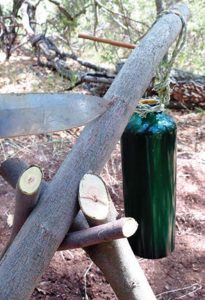
Due to their very slender and straight branches, they are often used (when dried out) for a spindle in a bow-anddrill fire set. The dried-out straight branches can be used for a hand drill by themselves with a hearth board, thus eliminating having to make a bow and bearing block (socket). Seep willow leaves are used to neutralize odor in clothes and shoes by placing a few leaves in the pockets or by folding clothes with leaves tucked between the layers.
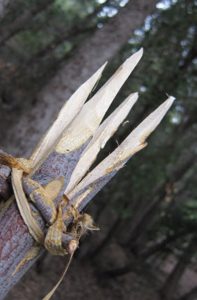
Pacific willows are found from Alaska to Mexico. They are identified by the tapering at the base of the leaf from a Ushape to a long, pointy tip.
Pacific willows produce salicin, which is closely related to acetylsalicylic acid, commonly known as aspirin. Various preparations from willows are used to treat stomachaches, sore throats, colds, diarrhea and dandruff. The inner bark is hemostatic and can be applied externally to bleeding cuts. A tip for hunters is that deer and elk browse the young shoots of the willow plant. It is also a preferred food of mice and cattle.
For making camp implements like tongs, forks, grills, and roasting sticks, willow can’t be beat! On the survival side, willow can be used to make spears for fishing, frogging, and hunting small mammals. Native Americans used willow for arrow shafts. Traps are best made with green wood ranging from thumb to broomstick thickness. Forked willow sticks are always useful around camp: place a stick between them and hang cooking pots on it. And let’s not forget the forked willow stick slingshot!
YUCCA
With 49 species and 24 subspecies, saying “yuccas” is like saying “birds,” so I’ll only go into detail on the characteristics that are general to most yucca trees. They are native to hot and arid parts of North America, Central America, South America, and the Caribbean.
The tough, fibrous leaves, with their sharp, spiny tips, were used to puncture meat and knotted to form a loop with which to hang meat for smoke houses or salt curing—a primitive form of meat hanger.
Dried yucca leaves and trunk fibers have a low ignition temperature, making the plant desirable for use in starting fires via friction. Once the long stalks have dried up, they are very soft and can easily be cut down with a saw to make drinking cups. Cutting a length about coffee mug tall and placing a dimesized ember from the fire in the middle of the stalk will slowly but surely start to hollow it out. Blow on the ember gently: too large a flame will thin the walls too much and burn through them.
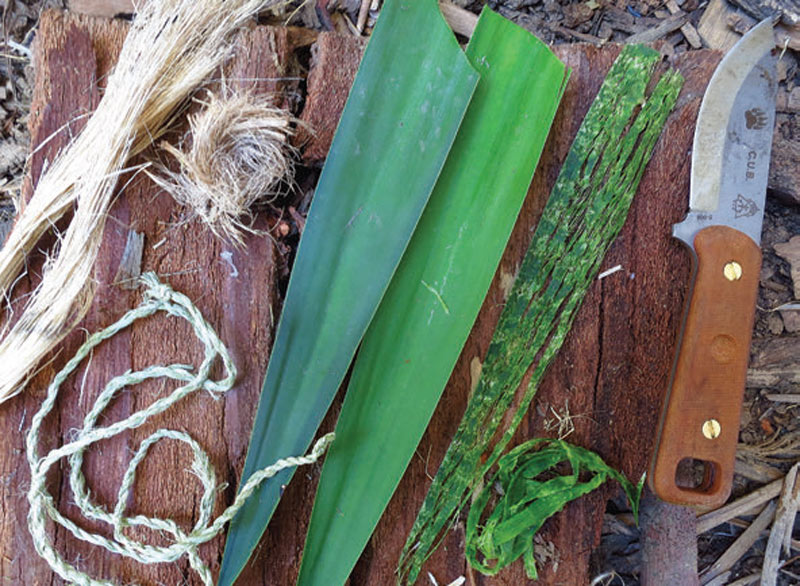
made into cordage. Dry yucca is excellent tinder for fire starting.
When the yucca is green and the stalk blooming with white flowers, they can be peeled off and eaten. One type of yucca is called “Lord’s candle.” The flowers are outlined with purple. Taste is very subjective, but to me the petals taste like a starchy potato, while the green inside tastes like a pistachio nut. They can be harvested in late spring and early summer.
Yucca is an important food source, but that isn’t all it offers.
Yuccas yield fibers from their leaves that are essential for making rope and baskets. The leaves are pounded with a rock until all the green pulpy plant material can be scraped off with a rock or knife blade. Whoosh the leaves around in water, and the fibers will separate easily. They need to be separated into fine strips. Then through a series of twisting, cordage is made.
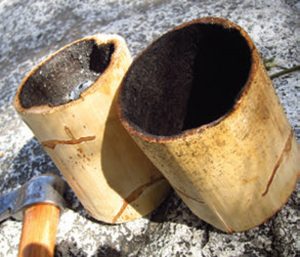
The aptly named soaptree yucca is a source of soap. The roots and leaves are pounded with a heavy object and put into water for a nice green lather. This soap can be used on a person’s body, hair, clothing and cookware.
Come to think of it, yucca really rivals willow when it comes to the number of different uses it has.
PRICKLY PEAR CACTUS
Who in their right mind would put something sharp and spiny in their mouth? That being said, the pads and fruits of the prickly pear cactus are important sources of vitamins A and C.
As menacing as the cactus looks (and feels), there is a nice reward waiting beyond the spines. The best time for harvesting the pads (nopales) is late spring to early summer. During this time, take only the young green pads, which are five to seven inches long. Dig out the spines and rinse.
Cut them into strips, boil for 15 to 20 minutes, and strain. They are ready to eat alone or mixed with other food. Be prepared for lemony flavored green beans. The pads can also be roasted directly on hot coals.
These are but three plants that are useful in a survival situation. Many more plants with myriad uses exist. Get out there and locate them. They might be your only friends if you find yourself without food in the wild.


